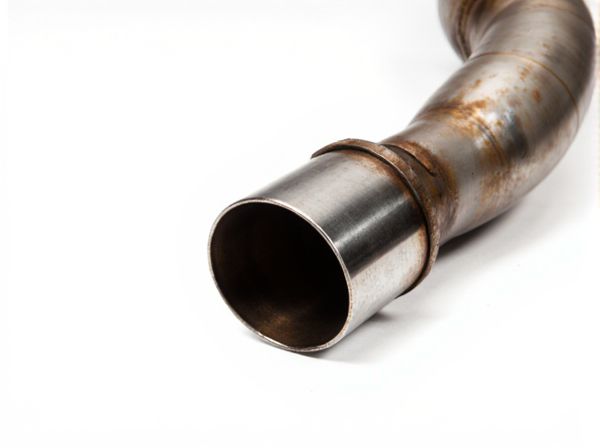
Photo illustration: Slip-fit Connection vs Welded Connection
Slip-fit connections offer ease of assembly and flexibility for maintenance or adjustments, making them ideal for applications requiring frequent disassembly or alignment. Welded connections provide superior strength, rigidity, and durability, ensuring permanent joints that can withstand heavy loads and harsh environments. You should choose slip-fit connections for temporary or adjustable setups and welded connections when structural integrity and long-lasting performance are paramount.
Table of Comparison
| Feature | Slip-fit Connection | Welded Connection |
|---|---|---|
| Installation | Easy, quick assembly using slip joints | Requires welding equipment and skilled labor |
| Seal Quality | Moderate, potential for leaks over time | High, permanent airtight seal |
| Durability | Less durable under vibration and thermal cycling | Highly durable and resistant to harsh conditions |
| Maintenance | Easier disassembly and part replacement | More complex, requires cutting and re-welding |
| Cost | Lower initial cost due to simplified installation | Higher cost due to labor and materials |
| Application | Ideal for temporary fixes and customizable setups | Best for permanent, high-performance exhaust systems |
Introduction to Slip-fit and Welded Connections
Slip-fit connections involve joining components by sliding one part into another, relying on precise dimensions for a tight fit without additional fastening. Welded connections create a permanent bond by melting and fusing metal parts, offering superior strength and rigidity. Selection between slip-fit and welded connections depends on factors like load requirements, assembly speed, and disassembly needs.
Key Differences Between Slip-fit and Welded Connections
Slip-fit connections rely on mechanical fastening or interference fit to join components, allowing easier assembly and disassembly, while welded connections fuse materials permanently through heat, providing superior strength and structural integrity. Slip-fit joints typically exhibit lower load capacity and may experience movement or loosening under stress, contrasting with welded joints that offer enhanced resistance to shear, tension, and fatigue loads. In terms of application, slip-fit connections are preferred for modular designs and maintenance convenience, whereas welded connections dominate in high-strength, permanent installations requiring robust, leak-proof seals.
Advantages of Slip-fit Connections
Slip-fit connections offer significant advantages such as ease of assembly and reduced installation time compared to welded connections, minimizing the need for specialized labor and equipment. These connections provide flexibility in alignment and disassembly, facilitating maintenance and adjustments without damaging components. Slip-fit designs also improve safety by eliminating heat-affected zones and reducing the risk of structural weakening associated with welding processes.
Benefits of Welded Connections
Welded connections provide superior structural integrity by creating a continuous metal joint, which enhances load-bearing capacity and resistance to shear and tensile forces. This method eliminates the need for additional fasteners, reducing potential points of failure and maintenance requirements. Welded joints also ensure greater rigidity and better performance under dynamic or high-stress conditions compared to slip-fit connections.
Common Applications for Each Connection Type
Slip-fit connections are commonly utilized in piping systems, HVAC installations, and electrical conduit assemblies due to their ease of assembly and disassembly, making them ideal for maintenance and temporary setups. Welded connections are preferred in structural steel frameworks, pressure vessels, and pipeline projects where permanent, high-strength joints are critical for safety and durability. Industries such as construction, oil and gas, and manufacturing often select slip-fit for flexibility and welded connections for robustness and leak-proof performance.
Strength and Durability Comparison
Slip-fit connections provide moderate strength through friction and mechanical locking, but their durability may decline under heavy loads or vibrations compared to welded connections. Welded connections create a continuous metal bond, offering superior strength and long-term durability by eliminating gaps and potential movement between parts. Structural applications demanding high load-bearing and resistance to fatigue often prefer welded joints due to their enhanced performance and reliability.
Installation Time and Labor Requirements
Slip-fit connections typically reduce installation time and labor requirements due to their easy alignment and assembly process, which eliminates the need for specialized welding skills. Welded connections demand skilled labor and extended time for preparation, welding, and cooling, increasing overall project duration and cost. The choice between slip-fit and welded connections significantly impacts efficiency, with slip-fit offering faster installation in modular or repetitive construction scenarios.
Cost Analysis: Slip-fit vs Welded Connections
Slip-fit connections generally offer lower initial material and labor costs due to simpler fabrication and quicker assembly compared to welded connections, which require skilled labor and specialized equipment. However, welded connections provide superior structural integrity and durability, potentially reducing long-term maintenance expenses and increasing overall lifecycle value. Cost analysis must weigh immediate savings against performance requirements, environmental conditions, and anticipated lifecycle demands to optimize investment.
Maintenance and Long-term Performance
Slip-fit connections simplify maintenance by allowing easy disassembly and replacement without specialized tools, reducing downtime in industrial settings. Welded connections offer superior long-term performance with enhanced strength and leak resistance but require more complex and costly repair procedures if damage occurs. Both connection types impact lifecycle costs differently, with slip-fit favoring operational flexibility and welded connections excelling in durability under high-stress conditions.
Choosing the Right Connection for Your Project
Slip-fit connections offer ease of installation and flexibility, making them ideal for projects requiring quick assembly or future adjustments. Welded connections provide superior strength and durability, suited for high-stress or permanent structures demanding long-term reliability. Assessing project load requirements, environmental conditions, and maintenance needs is essential to select the optimal connection type for effective performance and safety.
 caratoz.com
caratoz.com